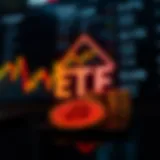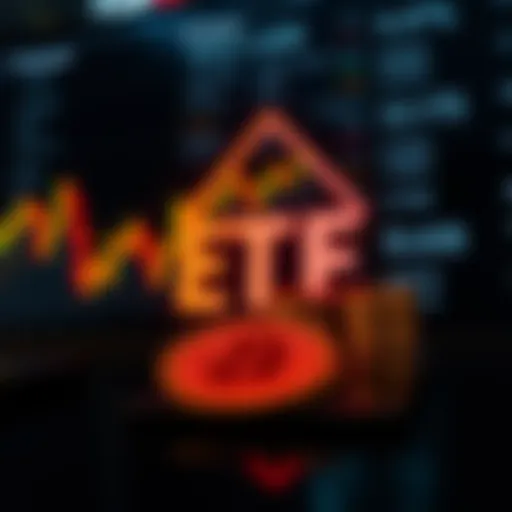Understanding Free Ether: Implications and Opportunities


Intro
In the ever-evolving landscape of cryptocurrency, the concept of free ether has emerged as a pivotal theme, capturing interest from investors, developers, and enthusiasts alike. To grasp the significance of free ether, one must first understand what it entails within the broader Ethereum ecosystem. This discussion aims to unpack the intricacies surrounding free ether, shedding light on its implications and the vast opportunities it presents in decentralized finance.
As Ethereum continues to evolve, understanding free ether is not just beneficial; it may well be essential for anyone navigating this digital terrain. Whether you are an investor looking to make informed decisions, a developer aiming to leverage new technologies, or simply an enthusiast curious about the latest trends, the nuanced understanding of free ether can guide your actions in this complex space.
With the right insights and strategies, one can understand and potentially benefit from what free ether has to offer. Let's dig deeper and explore the core components of this fascinating topic.
Crypto Concepts Explained
Key Terminology and Definitions
Before diving deeper, it's crucial to outline some fundamental terms that often swirl around the concept of free ether. Understanding these terms helps to contextualize discussions and analyses that follow.
- Ethereum: This is more than just a cryptocurrency; it’s a decentralized platform that enables smart contracts and decentralized applications (DApps) to be built and run without any downtime, fraud, control, or interference from third parties.
- Ether (ETH): The native cryptocurrency of the Ethereum platform, used for transactions within the ecosystem, as well as for compensating participants who perform computations and validate transactions.
- Gas: A unit that measures the amount of computational effort required to execute transactions or smart contracts on the Ethereum network.
- Free Ether: Refers to ether that can be accessed or earned without a direct monetary investment, typically facilitated through various promotions, rewards mechanisms, or specific DApps.
Understanding these terms will help navigate the conversation surrounding free ether, enabling a more substantive grasp of its implications.
Practical Applications of Blockchain Technology
The relevance of blockchain technology within the Ethereum network cannot be overstated. Here, we discuss some of the practical applications that intersect with free ether:
- Decentralized Finance: DeFi projects allow users to access financial services—like lending, borrowing, and trading—without intermediaries. Free ether can sometimes be part of promotions or rewards in these applications.
- Gaming: Play-to-earn models are becoming increasingly popular. Users can potentially earn free ether by participating in blockchain-based games, turning leisure into profit.
- Community Engagement: Some protocols distribute free ether as a way to encourage community participation, enabling users to become more involved in governance or development processes.
While these applications promise exciting developments, they also encourage a careful examination of the potential benefits and risks involved.
Understanding the mechanisms behind free ether equips users with the knowledge to make informed decisions, turning potential risks into strategic opportunities.
In the following sections, we will delve into the investment strategies that weave into the narrative of free ether, exploring how market trends affect potential returns and the methods stakeholders can use to manage risk effectively.
Preamble to Free Ether
Understanding Free Ether is becoming increasingly crucial within the ever-evolving landscape of cryptocurrency. With the rapid rise of Ethereum and its decentralized finance (DeFi) ecosystem, the concept of free ether offers significant implications for various stakeholders. For investors, analysts, and developers alike, grasping what free ether is can lead to informed decision-making, potentially unlocking new avenues for profit and innovation.
At its core, free ether represents opportunities that can be gained without direct financial investment. It signifies accessibility in a market often perceived as daunting. Those who understand how this concept functions are better positioned to benefit from it, whether through airdrops, faucets, or strategic participation in network liquidity. Furthermore, the mechanisms surrounding free ether can demystify the Ethereum ecosystem, ultimately encouraging more participation from diverse groups.
This section lays the groundwork by defining free ether and delving into its historical context, presenting a clear picture of its significance in today's blockchain environment.
Defining Free Ether
Free ether can be understood as the portions of the Ethereum cryptocurrency that users can acquire without significant capital expenditure. This process often arises through mechanisms such as airdrops or faucets, where ether is distributed at no cost to participants as incentives or promotional tools. By capitalizing on these opportunities, individuals can enter the Ethereum ecosystem, gaining valuable exposure to its functionalities and potential returns. In this context, free ether is not just currency; it's a gateway that can invigorate a user’s journey into blockchain technology.
Historical Context of Ether Distribution
Examining the historical context of ether distribution is essential for understanding the evolution of free ether. When Ethereum was launched in 2015, it had a unique Initial Coin Offering (ICO) that set the tone for how ether would be distributed, but it's worth noting that the air of that launch was different from today's climate. At that time, the community actively engaged in discussions about decentralization and the transformative potential of smart contracts. This led to the creation of various distribution strategies, including developer grants and community-based initiatives.
Since then, multiple events, particularly during the crypto bull runs, have introduced innovative models for distributing ether. Notably, the advent of airdrops in the early 2020s saw projects using free ether as a means to encourage user engagement, stimulate liquidity, and build robust communities. This historical perspective reveals that while ether's journey began through ICOs, it has since expanded to encompass various distribution methodologies aimed at enhancing user participation and fostering a richer ecosystem.
"In the blockchain world, free ether symbolizes not just wealth, but also an opportunity for empowerment and a stake in a rapidly growing digital economy."
By understanding these foundational concepts, readers position themselves to better capitalize on free ether opportunities as we explore further in this article.
The Mechanics of Ether Acquisition
The idea of acquiring ether is complex yet crucial in understanding how free ether fits into the larger Ethereum ecosystem. Ether, often symbolized as ETH, isn't just a currency; it's an integral part of numerous interactions and transactions on the Ethereum network. Mechanisms surrounding ether acquisition influence not only individual investors but also the vibrant landscape of decentralized applications. As such, knowing how ether enters the market helps clarify the implications of free ether, providing a lens through which opportunities can be assessed.
Understanding Gas Fees
Gas fees are the lifeblood of the Ethereum network, a prerequisite for executing transactions and smart contracts. Simply put, every action comes with a cost, and that's where gas fees come in. When you send ether, deploy a contract, or interact with a decentralized application, you must provide compensation to the miners or validators who secure the network. Understanding how to gauge and manage these fees is paramount for anyone venturing into ether acquisition.


To break it down:
- What are Gas Fees? Gas refers to the unit that measures the amount of computational effort required to perform specific operations on the Ethereum network. These fees fluctuate depending on network demand.
- Implications for Users: When the network is busy, gas fees can skyrocket. It's essential for users to be strategically aware: higher fees may mean lower speed, while lower fees might imply longer waiting times.
- How to Calculate: Users can utilize platforms like Gas Station to get real-time estimates of gas prices. With this knowledge, you can choose optimal times for transactions to minimize costs.
Takeaway: Be prepared for volatility; the gas market reflects the network’s health and user activity. Staying informed helps mitigate unexpected costs and enhances the ether acquisition process.
Mining and Staking Dynamics
Ether acquisition extends beyond just buying on exchanges; many users are engaging with mining and staking, each representing a distinct approach with unique advantages and risks.
Mining remains a classic method, rooted in the proof-of-work model where miners solve complex mathematical puzzles to validate transactions and secure the blockchain. This effort rewards miners with newly minted ether, contributing to their acquisition directly, albeit involving substantial energy consumption and technical knowledge.
On the flip side, staking is increasingly gaining traction post-Ethereum’s shift to proof-of-stake. Stakers participate by locking up their ether in order to support the network’s operations. In return, they earn rewards, effectively generating additional ether. The mechanics of staking simplify the claim to new ether without needing extensive computational resources. Yet, stakers must consider variables such as:
- Validator Selection: Choosing reputable validators impacts your staking yield.
- Lock-up Periods: Staking ether ties up funds for specified durations; being aware of the terms is essential.
In summary, understanding both mining and staking dynamics can present further opportunities for ether acquisition. Each method offers paths to free ether that cater to different profiles of users—whether they're seasoned miners, cautious investors, or risk-taking enthusiasts.
By dissecting the mechanics behind ether acquisition, one becomes better equipped to navigate the complexities of the Ethereum landscape. When opportunities are compounded by knowledge about gas fees and the mechanisms behind mining and staking, users can make more informed decisions that align with their financial goals.
Accessing Free Ether: Methods and Strategies
Accessing free ether is much more than just a whimsical notion; it’s a tangible opportunity for anyone, from seasoned investors to curious newcomers. Understanding the methods available is not only essential but can lead to significant benefits. In a world where every digital asset counts, the strategies one employs to access free ether could mean the difference between small, incremental gains and substantial, life-changing investments.
Airdrops and Bounties
Airdrops and bounties are two of the most popular methods to gain free ether, often creating stirrings within the crypto community. An airdrop is when tokens or ether are distributed for free to numerous wallet addresses, often to promote a new cryptocurrency project. This distribution can occur when a project launches or during major upgrades. For instance, projects like Uniswap has used airdrops to reward early adopters, much to the delight of thousands of users who found unexpected assets in their wallets.
A bounty, on the other hand, generally requires some action from the user’s end. It might involve participating in social media campaigns, finding bugs, or creating educational content. The rewards, typically in ether or tokens, incentivize community engagement and allow participants to contribute meaningfully while earning a reward. This model not only promotes the project but also enriches the community.
Important points to consider when engaging with airdrops and bounties:
- Legitimacy: Always verify the project behind an airdrop or bounty; scams abound in this space.
- Participation Requirements: Know what is asked of you. Are you sharing personal information, or is it just a simple tweet?
- Market Impact: Be mindful that mass airdrops can affect ether’s market value due to increased supply.
It's vital to keep an eye on crypto-focused forums or sites like CoinDesk and Reddit to stay updated on the latest opportunities.
Utilizing Faucets
Faucets serve as another practical route to access free ether, albeit in smaller quantities. These are websites or applications that distribute free ether in return for performing simple tasks, which may include solving captchas or viewing ads. An example would be platforms like Ethereum Faucet, where users can claim small amounts of ether periodically.
While faucet amounts are usually negligible, they are particularly beneficial for new users wanting to familiarize themselves with the Ethereum environment. By interacting with faucets, one can experiment with transactions, get a feel for gas fees, or even learn how smart contracts work without any financial risk.
Consider the following when utilizing faucets:
- Verification: Ensure that the faucet is trustworthy and has a good reputation; fraud can visit even seemingly credible faucets.
- Token Limits: Understand the limits placed by faucets on how often you can claim ether, as these caps can reduce the efficiency of this method.
- Time Investment: Be aware of how much time you are dedicating to earning through faucets compared to potential rewards.
On that note, engaging with these methods provides a hands-on way to connect with decentralized finance while nurturing one's knowledge about the Ethereum ecosystem.
"In a digital realm that's still abstract for many, even tiny bits of free ether can unlock vast learning experiences."
Utilizing the strategies of airdrops, bounties, and faucets, users are not only accessing free ether but are also laying groundwork for future endeavors in the expansive world of decentralized finance.
Risks Associated with Free Ether
The excitement surrounding free ether can sometimes overshadow an equally important aspect: the risks inherent to obtaining and utilizing it. Understanding these risks is crucial for both new entrants in the Ethereum space and seasoned players alike. Ignoring this aspect can lead to significant financial losses and reputational damage. This section delves into two primary risks associated with free ether: scams and market volatility.
Scams and Fraudulent Schemes
The cryptocurrency realm is, unfortunately, a breeding ground for unscrupulous actors. Free ether, often seen as low-hanging fruit, tends to attract various scams. One common tactic is the phishing scam, where deceitful actors create fake websites that mimic legitimate platforms to steal private keys or personal information. An example can be seen in sites that offer free ether in exchange for your wallet details or some form of upfront payment.
These scams usually take the form of:


- Airdrop Scams: Fraudsters might lure victims with promises of free tokens, needing only a small investment or personal information to "secure" their share.
- Fake Faucets: Some sites advertise free ether, only to require minor payments for supposed "unlocking fees."
- Investment Schemes: Scammers often pitch high-return, risk-free investments where participants are asked to send ether to untraceable wallets.
Education is your first line of defense. It’s prudent to always verify the authenticity of sources before engaging with them. Remember: If an offer seems too good to be true, it probably is.
Market Volatility Factors
Market volatility is the second significant risk associated with free ether. Prices for ether can swing dramatically in short periods, influenced by various factors including market sentiment, regulatory news, and technological developments.
For instance, the Ethereum network's recent upgrades can shift investor perception, resulting in price surges or drops. Events in the wider economy, like interest rate changes or geopolitical tensions, can also affect ether's value.
The following factors contribute to this volatility:
- Speculation: Many investors buy ether not for its utility but rather as a speculative asset, heightening price fluctuations.
- Liquidity Concerns: Though ether generally has good liquidity, specific markets or times may see low trading volumes, causing larger price spikes.
- Regulatory News: Changes in regulations can spook the market, causing investors to react based on fear rather than fundamentals. This was observed during the U.S. SEC's discussions around token classifications.
"Volatility is the price of creativity." - Lettie C.
Investors must manage risks effectively. Strategies such as diversification, utilizing stop-loss orders, and staying informed about market trends can mitigate potential losses from volatility.
In summary, while opportunities for earning free ether abound, being aware of the scams and the inherent market volatility is crucial for informed participation. This awareness equips investors and enthusiasts to navigate the Ethereum landscape more safely and effectively.
For more extensive coverage on crypto risks, consider exploring resources like Britannica or community discussions on platforms like Reddit.
The Role of Free Ether in Decentralized Finance (DeFi)
The increasing prominence of decentralized finance, commonly referred to as DeFi, marks a notable shift in the financial landscape. At the heart of this evolution is Ether, the native cryptocurrency of the Ethereum network. Free Ether, in particular, plays a fascinating role as it not only fuels transactions but also opens doors to various financial opportunities. Understanding this role is crucial for investors, developers, and enthusiasts alike, as it showcases the novel functionalities that Ether can provide in a decentralized framework.
Liquidity Provisioning
Liquidity provisioning can be thought of as the lifeblood of decentralized finance. By definition, liquidity refers to how easily an asset can be converted to cash or utilized in transactions without significantly affecting its price. In the context of DeFi, free Ether becomes pivotal as it contributes to liquidity pools, which are essential for decentralized exchanges like Uniswap and SushiSwap.
When users deposit free Ether into these liquidity pools, they enable the platform to facilitate trades smoothly. In return, liquidity providers earn fees from traders who use the platform. This is a win-win situation: the users looking to exchange assets find a ready market, while liquidity providers enjoy passive income.
While the potential for earning is enticing, it is critical to recognize the associated risks. Liquidity pools can sometimes lead to impermanent loss, a phenomenon where the value of assets might decline relative to holding them outright. Hence, practitioners in this space must weigh the benefits against these tangible risks.
"In liquidity provisioning, free Ether transforms into more than just a digital asset; it becomes a tool for financial empowerment."
Yield Farming Opportunities
Yield farming offers another avenue where free Ether's role in DeFi is highlighted. This practice involves moving assets around different platforms to earn the highest yield possible. Those with free Ether can generate substantial returns by participating in yield farming. By lending out their Ether or providing liquidity to various pools, individuals can capitalize on their Ether holdings and earn interest.
Some platforms feature enticing incentives, such as native token rewards, which increase the overall gains for users. However, navigating the yield farming landscape requires a keen understanding of the underlying protocols to avoid pitfalls such as high fees or impermanent loss.
Yield farming’s growth can be attributed to its low barrier to entry, making it accessible for both seasoned investors and new entrants in the space. To summarize, free Ether becomes a versatile asset in yield farming, enabling users to extract value whilst engaging in innovative financial practices.
Notable Projects Utilizing Free Ether
The realm of free ether, while intricate, is painted with a tapestry of projects that have leveraged this potential to innovate and expand the Ethereum ecosystem. Understanding these notable projects not only highlights the adaptability of free ether in various applications but also illuminates the mechanisms driving engagement and interest in decentralized finance.
Review of Successful Airdrop Initiatives
Airdrops have become a pivotal strategy for many blockchain projects, acting as both a marketing tool and a means to redistribute tokens within the ecosystem. Through effective airdrop initiatives, projects have been able to attract users and investors by granting them free ether or associated tokens without any upfront cost. Here are a few successful examples:
- Uniswap: This decentralized trading protocol is known for its pioneering approach to liquidity in DeFi. In September 2020, they launched a significant airdrop that rewarded early users with governance tokens, which not only garnered widespread attention but also solidified community engagement, enhancing the protocol's credibility.
- 1inch: Another layer in the DeFi space, 1inch executed an airdrop that allowed users of their decentralized exchange aggregator to receive tokens based on prior interactions with the platform. This initiative rewarded loyal users, fostering a sense of community and shared purpose amongst participants.
These airdrop initiatives exemplify how free ether can be utilized to promote user interaction, democratize access to resources, and build robust communities around blockchain projects. However, for every successful airdrop, there are important considerations for participants: some airdrops may require users to complete certain tasks or hold specific tokens, creating a barrier to entry. Furthermore, airdrop fatigue is a growing concern, with users sometimes experiencing an overwhelming number of similar initiatives, diluting the perceived value.
Innovative Use Cases in DeFi
The innovative applications of free ether transcends mere financial transactions. Several projects demonstrate how ether can transform traditional paradigms into cutting-edge decentralized solutions:


- Compound Finance: This platform enables users to lend and borrow assets, driven by the ethos of decentralized finance. By utilizing free ether, users can engage in yield farming, thereby generating returns on their idle assets while simultaneously participating in a lending ecosystem. This not only creates liquidity but also allows for a more efficient allocation of resources.
- SushiSwap: An evolution of Uniswap, SushiSwap offers a unique twist by integrating community governance and incentivizing liquidity provision with rewards distributed in free ether. These mechanisms enhance user interactions and experience, attracting a diverse range of investors who can actively participate in decision-making processes.
These innovative use cases illustrate that free ether is not just a standalone asset; it plays a supportive role in the broader context of financial systems, enhancing both functionality and security within decentralized finance frameworks.
"The rise of free ether illustrates a fundamental shift in how we perceive value and participation in financial systems."
In summary, notable projects utilizing free ether exemplify the dynamic possibilities within decentralized finance. Airdrop initiatives, as examined, present both opportunities and caveats for participants, while innovative applications highlight the transformational impact of ether in reshaping financial landscapes. Engaging with these projects offers valuable insights for investors, analysts, developers, and enthusiasts and provides pathways for further exploration in the ever-evolving Ethereum ecosystem.
Looking Ahead: Future Trends in Ether Distribution
As we navigate through the evolving landscape of the Ethereum ecosystem, understanding the future trends in ether distribution is paramount. This area indicates not just where the technology is headed but also how it will mold user engagement, adoption, and financial opportunities for all stakeholders involved. The implications and opportunities tied to these trends stretch far and wide, touching on aspects that investors, developers, and enthusiasts alike should pay attention to. A few crucial elements will define the journey forward."
Emerging Distribution Models
In recent months, a slew of innovative distribution models have surfaced, each bringing unique mechanisms for ether accessibility and incentivization. One such model includes dynamic airdrops, tied to user interaction or participation within the community, ensuring algorithms assess genuine interest.
This approach moves away from conventional blanket distributions, addressing the growing concern of airdrop fatigue among seasoned users who often feel inundated with trivial offers. Besides, models that prioritize user engagement herald a shift towards a more community-driven ethos, fostering loyalty through meaningful rewards. Another noteworthy emergence is the concept of token-curated registries which allow users to stake ether for creating accurate listings of decentralized applications. Here’s a quick list of potential future models:
- Decentralized Social Airdrops: Distribution linked to social media activity, rewarding for engaging content and community building.
- Incentive-Based Distribution: Rewards for providing liquidity or engaging in governance decisions which ties user motivation with ecosystem stability.
- Merkle Drop Mechanism: Ensuring transparency and verification where only the right individuals get access to airdropped tokens.
These adaptations reflect an ethos of tailoring ether distribution to actual user contributions, rather than relying on static criteria that may lead to imbalances.
Impact of New Regulations
As governments across the globe wrestle with how to regulate cryptocurrency and its underlying technologies, future ether distribution will undoubtedly come under scrutiny. New regulations may impose clearer frameworks on how ether gets distributed, requiring projects to implement compliance measures that ensure consumer protection and discourage financial malpractice. These regulations could serve multiple purposes, they might:
- Foster Trust: Clear legal guidelines could enhance trust in ether distribution mechanisms.
- Encourage Adoption: Well-structured frameworks might bring a wave of institutional investment into Ethereum, expanding its user base.
- Promote Transparency: Enhanced reporting could prevent malfeasance, ensuring that both projects and users have a clearer understanding of their rights and responsibilities.
However, it’s essential to stay vigilant. Overly stringent regulations could stifle innovation, making it harder for new projects to launch effectively. This delicate balance calls for the stakeholders in the ether community to engage proactively with regulators, advocating for fair and supportive policies.
"Navigating regulations will be critical. They can either propel us forward or hold us back."
As the ether landscape evolves, being proactive in understanding these impending shifts in distribution models and regulations might just be the deciding factor for many investors and developers. Adapting to these changes will not only solidify the role of ether but also maximize its potential benefits across the decentralized finance spectrum.
End: The Landscape of Free Ether
The discussion surrounding free ether is more than just a fascinating topic in the cryptocurrency landscape; it reflects the evolving nature of digital assets and the ongoing innovation within decentralized finance. Understanding free ether is essential for anyone looking to navigate this ecosystem effectively. From its implications for newly minted investors to seasoned developers, free ether embodies the spirit of accessibility that Ethereum aims to promote.
Free ether opens pathways for both investment and participation. It promotes a sense of community by enabling diverse individuals to take part in the Ethereum network without substantial financial entry barriers. This democratization of access can foster not only investment in cryptocurrency but also meaningful engagement with blockchain technology.
As we discuss the implications of free ether, we should consider the following points:
- Accessibility: Free ether facilitates entry for individuals who might otherwise be hesitant to wield financial capital in the volatile crypto market.
- Innovation: The mechanisms for distributing free ether often lead to new projects and technologies that can maintain the momentum of decentralization.
- Community Growth: By allowing for easier participation, the network can expand its user base, which can lead to enhanced liquidity and decreased volatility in the long run.
The various avenues through which one can access free ether, such as airdrops and faucets, are points of interest that can be strategically leveraged. However, it is vital to balance enthusiasm with caution—understanding both the potential benefits and the associated risks.
"The ability to tap into free ether can be a game-changer, but knowledge is the best armor against pitfalls in this uncharted territory."
In summary, the landscape around free ether is dynamic and evolving. Those who engage thoughtfully with this subject matter stand to gain not just financially, but also intellectually, in understanding the broader implications of decentralized finance. The opportunities beckon, but informed participation remains key to sustainable growth.
Summarizing Key Takeaways
As we wrap up this exploration, it’s crucial to encapsulate the core insights surrounding free ether:
- Free ether serves as a vehicle for democratizing access to the Ethereum network.
- There are various methods available for acquiring free ether, each with distinct advantages and risks.
- The role of free ether in decentralized finance is significant, influencing liquidity and the broader ecosystem.
- Risks, including scams and market fluctuations, necessitate vigilant engagement.
Overall, awareness and education serve as cornerstones for navigating this compelling aspect of cryptocurrency and decentralized finance.
Encouraging Informed Participation
The crux of meaningful engagement with free ether lies in the nuances that go beyond surface-level interactions. It’s critical for investors, analysts, and developers alike to arm themselves with knowledge to make wise decisions in a space often rife with complexity and risks.
Knowledge is power, and in this rapidly changing environment, informed participation means:
- Keeping abreast of the latest developments in distribution models and regulatory adjustments.
- Engaging with reputable resources such as Wikipedia, Investopedia, and forums such as Reddit for communal insights.
- Participating in discussions within the community to understand diverse perspectives and share experiences.
Investing time into understanding free ether not only prepares you for the myriad opportunities ahead but also allows you to contribute meaningfully to the collective advancement of the community. As the Ethereum ecosystem continues to grow and evolve, your informed participation will play a vital role in shaping its future.















